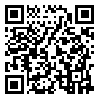

Volume 14, Issue 1 (11-2016)
RBS 2016, 14(1): 7-13 |
Back to browse issues page
Download citation:
BibTeX | RIS | EndNote | Medlars | ProCite | Reference Manager | RefWorks
Send citation to:



BibTeX | RIS | EndNote | Medlars | ProCite | Reference Manager | RefWorks
Send citation to:
آکوچکيان ش, صالحي ف, نجفي م, الماسي آ. Prevalence of Urinary Complaints in Patients with Obsessive-Compulsive Disorder and its Relationship with Obsession, Anxiety, and Depression. RBS 2016; 14 (1) :7-13
URL: http://rbs.mui.ac.ir/article-1-443-en.html
URL: http://rbs.mui.ac.ir/article-1-443-en.html
1- دانشجوي پزشکي، دانشکده پزشکي، دانشگاه علوم پزشکي اصفهان، اصفهان، ايران
2- دانشيار، مرکز تحقيقات علوم رفتاري، گروه روان پزشکي، دانشکده پزشکي، دانشگاه علوم پزشکي اصفهان، اصفهان، ايران
3- کارشناس ارشد روانشناسي، مرکز تحقيقات روانتني، گروه روانشناسي، دانشگاه علوم پزشکي اصفهان، اصفهان، ايران
2- دانشيار، مرکز تحقيقات علوم رفتاري، گروه روان پزشکي، دانشکده پزشکي، دانشگاه علوم پزشکي اصفهان، اصفهان، ايران
3- کارشناس ارشد روانشناسي، مرکز تحقيقات روانتني، گروه روانشناسي، دانشگاه علوم پزشکي اصفهان، اصفهان، ايران
Abstract: (3004 Views)
Aim and Background: A separate chapter of the Diagnostic and Statistical Manual of Mental Disorders (DSM-5) distributed in 2013 has been allocated to Obsessive-compulsive disorder (OCD). It is defined as unwanted, repeated, and obtrusive beliefs, images, thoughts, and anxiety or repetitive mental behaviors and actions. Clinical evaluation of patients with OCD has revealed their complaints regarding urology symptoms. Therefore, it has been theorized that OCD is correlated with urology symptoms such as urination frequency. Methods and Materials: This study was conducted on 100 patients with OCD referred to the OCD Clinic affiliated to Isfahan University of Medical Sciences, Iran, in 12013. In order to determine the severity of the disorder, the Yale-Brown Obsessive-Compulsive Scale (Y-BOCS) was used. The Hospital Anxiety and Depression Scale (HADS) was used for the assessment of the degree of anxiety and depression. In addition, the Lower Urinary Tract Symptoms-Questionnaire (LUTS-Q) and a 25-item checklist were used for the evaluation of urinary symptoms. The data were analyzed using Student's t-distribution, one way ANOVA, chi-square test, and the Pearson coefficient in SPSS. Findings: The average of urinary symptoms score was 11 ± 6.8 and ranged from 0 to 27. There was a direct correlation between urinary symptoms and OCD symptoms (P = 0.022). Moreover, there was direct correlation between anxiety and depression score and urinary symptoms (P < 0.001). On the other hand, there was a direct correlation between the Y-BOCS score and anxiety and depression score (P = 0.049). Conclusions: In more than half of the participants, OCD was accompanied with urinary symptoms. In addition, 74% of patients had anxiety and depression disorder. Thus, these disorders require attention in the evaluation and treatment of patients with OCD and must be considered in their treatment interventions.
| Rights and permissions | |
 |
This work is licensed under a Creative Commons Attribution-NonCommercial 4.0 International License. |



